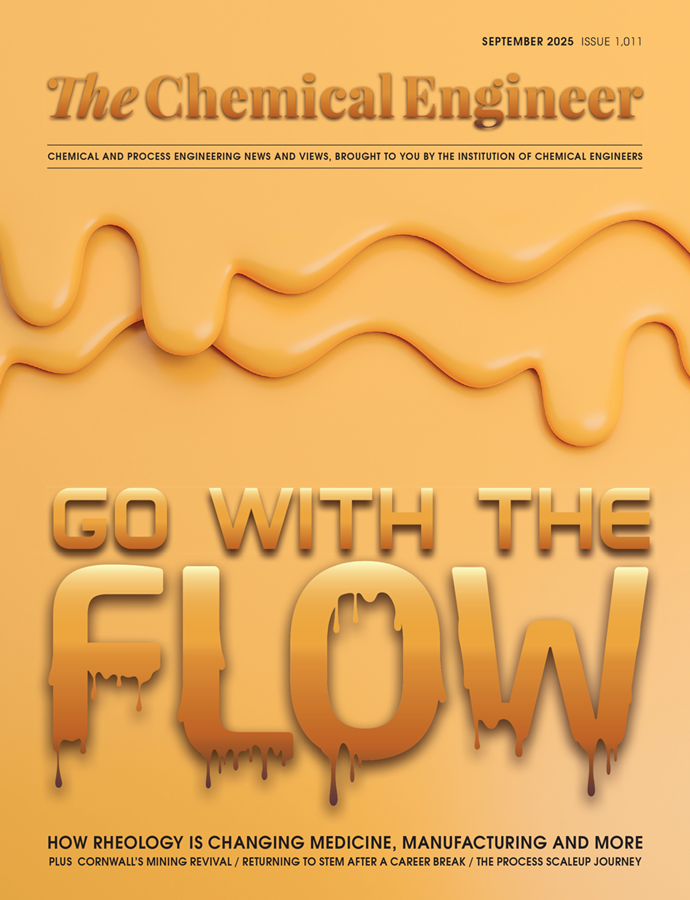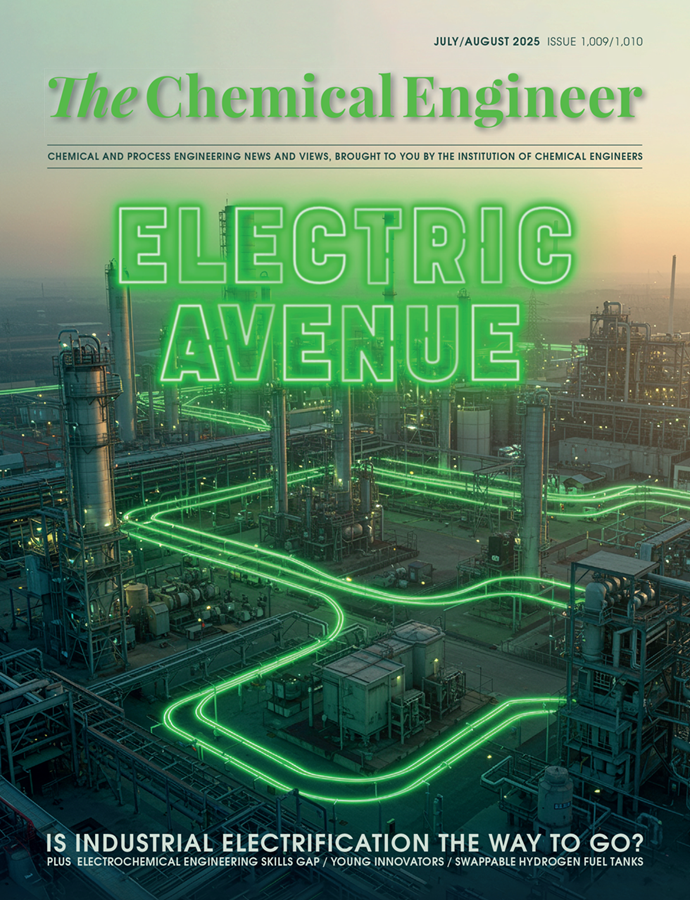Making a Safe Space for Carbon
Captured CO2, repurposed pipelines and rising risks – Sam Baker reports on why CCUS safety systems must evolve as fast as the investment
“THE BIG benefit is that it is not flammable or explosive,” says Jonathan Marriott, a lead consultant at Wood, specialising in CCUS and decarbonisation. But instead of going bang, CO2 can kill through asphyxiation. At concentrations greater than 15% in air, it can kill within a minute.1
“It’s more dangerous than a simple asphyxiant,” Marriott explains. This is because it dissolves into the bloodstream and disrupts blood pH. It also becomes more toxic the longer it stays in the body.
According to Gyashvir Jalabhay, principal HSE engineer at Wood, CO2 is typically transported in pipelines as a liquid at pressures of around 1,400 psi – “very high” in process engineering. A leak at that pressure could be fatal to anyone caught in the resulting vapour cloud.
“It’s not always visible,” Jalabhay adds. A liquid CO2 leak is often marked by a white mist, mostly water vapour, “but what you don’t see is the invisible part which has potentially got very hazardous concentrations of carbon dioxide”. Because CO2 is heavier than air, it tends to settle near the ground. Depending on changes to topography and weather conditions, Jalabhay says “it can either disperse pretty rapidly or very slowly”. Flat, windy conditions will help disperse a CO2 vapour cloud, but in more hilly regions it will tend to sit in the bottom of valleys.
Managing the risks of a CO2 leak isn’t as simple as repurposing a hydrocarbon pipeline and swapping “causes death by explosion” for “causes death by asphyxiation” on the risk assessment. CO2 is an “unusual” material, Marriott says, as it can exist in three phases as well as the supercritical phase, “and you can get changes in phase behaviour that need to be accounted for in the design”.
If the pressure and temperature of CO2 are not tightly controlled it could damage the pipeline and cause a leak. Above 74 bar absolute and 31oC it is a supercritical fluid, able to act as a solvent while also dissolving into solid materials like the plastics and elastomers found in gaskets and valves. A sudden depressurisation caused by a crack in the pipeline could then damage any components that have absorbed CO2 as it turns back into a combination of liquid and vapour. Continue dropping below 5.2 bar absolute and dry ice starts forming. “It’s like letting off a CO2 liquid fire extinguisher,” Marriott says. Dry ice could cause a blockage. If pressure continues to drop, the temperature could then plummet below the triple point of -57oC, adding further risk of pipeline embrittlement.
Effective pipeline management is essential for preventing fractures. Pipelines must be constructed from strong, durable materials, with quality regularly monitored, just as is standard practice in hydrocarbon transport. From a chemical engineering perspective, a CO2-specific measure that needs to be tightly controlled is the pressure and temperature, which is dependent on having as high purity CO2 as possible when it is injected into the pipeline. The three main types of carbon capture – pre-combustion, post-combustion and oxyfuel – all involve extracting CO2 from complex flue gases. Minimising contaminants such as water, nitrogen, nitrous oxides and glycols in the CO2 stream sent to the pipeline depends on both the efficiency of the capture method and the rigour of post-processing. “If you’ve got impurities upstream, it is going to contaminate the whole stream across the chain,” says Jalabhay. “So, you’ve got to be careful what you are putting into the system to start with.”

Growing concerns
In a recent TCE reader feedback survey, the overwhelming majority told us that while they are concerned about process safety in CCUS systems, they are no more worried than with any other technology.
Public concern around CO2 pipeline safety is growing, however. In August, a campaign group in the UK filed a lawsuit challenging the government’s approval for the HyNet project in northwest England, in which CO2 captured from local industries will be transported to depleted gas reservoirs in Liverpool Bay via 149 km of repurposed pipelines and 35 km of new pipelines.2 Campaigners will argue in the High Court that the government failed to assess the risk of major accidents associated with CO2 storage, among other environmental concerns.
The UK legal challenge echoes a similar campaign in the US, where a group in Shelby County, Iowa is taking Summit Carbon Solutions to the Supreme Court over safety concerns surrounding its planned CO2 pipelines across the state.
CO2 pipeline safety was brought into focus in February 2020 when a leak from a pipeline, then-owned by Denbury, hospitalised 45 people in Satartia, Mississippi. An evacuation of the area was ordered, but because of heavy rain and the local topography, the CO2 cloud dispersed very slowly and slumped towards the town, meaning that cars parked there wouldn’t start. “They couldn’t escape from the area because it was all gradually being engulfed by CO2,” explains Jalabhay. A subsequent investigation found that the pipeline had been ruptured by a landslide.3
The causes of the Satartia incident were not especially unique to a CO2 pipeline – hydrocarbon pipelines also need protecting from the weather. However, Jalabhay believes there needs to be “more awareness of the hazards presented by CO2 when it is dispersed”.
“We’ve seen some projects where this risk has been partly designed out,” Marriott adds. “Where we’ve got pipelines running through populated and industrial areas, sometimes we design those in the gas phase where you don’t get such a big release in the event of a loss of containment, and you don’t get these dense clouds forming.” Once the pipeline reaches a remote area, the CO2 is typically compressed into a liquid or supercritical state – an approach preferred for its ability to transport larger volumes more efficiently.
But concerns remain about routing pipelines through densely populated areas. Hong Wai Onn, an IChemE Fellow and founder of the Malaysia-based Research Institute for Sustainable Excellence and Leadership, highlights the risks by citing a recent fire at a Petronas-operated hydrocarbon pipeline on the outskirts of Kuala Lumpur, which damaged more than 200 homes.4 “This incident underscores that underground pipeline integrity requires continuous monitoring systems,” he says. He adds that “urban proximity creates significant evacuation challenges, and pipeline incidents can rapidly escalate into major emergencies”.
Hong fears that as global CCUS investment accelerates “safety regulation appears to be lagging behind technological deployment”. In the UK, the Health and Safety Executive is preparing a report in response to a recent consultation on how best to regulate CCUS systems, but this comes after the government has already committed almost £30bn (US$40.5bn) in funding to CCUS projects since 2023.
Ultimately, Jalabhay believes there is a general recognition that the regulatory framework for gas transmission needs to be updated, “because historically it has all been for hydrocarbon pipelines”. However, he and Marriott stress that CCUS safety risks should be assessed on their own terms, not by drawing comparisons with other high-hazard industries. “It’s not about more or less,” says Jalabhay. “It’s about addressing the hazards and mitigating the risks.” Which is perhaps why Marriott is coy about quantifying exactly how worried he is about process safety in CCUS: “I see it as my job to be worried about process safety in every project.”
Purity matters
At the opposite end of the CCUS chain to pipelines lies the process to capture the CO2 directly from industrial flue gas. This happens before the gas is compressed, so the asphyxiation risk from CO2 is low at this stage. Nonetheless, engineers must still consider pipeline hazards at the point of capture as impurities in the CO2 can cause problems in the pipeline further downstream.
Carbon Clean, a UK company that designs post-combustion carbon capture technology, aims for CO2 purity of at least 99.5%, which it says its plants achieve. Carbon Clean’s technology uses a proprietary amine solvent to dissolve the CO2 from the flue gas, one of the most common capture techniques. The CO2 is then removed from the amine solution before being sent to a compressor and onto the pipeline for transport and storage.
A more pressing risk at the capture stage is the potential for toxic degradation products from the amine solvent to be absorbed into the depleted flue gas and released into the environment. Eddie Griffiths, a chemical engineer and director of product management at Carbon Clean, says limiting solvent degradation is one of the company’s main priorities in designing their solvent and how it is processed.
Griffiths says pre- and post-treatment of the flue gas are the “two major levers” available to limit the release of amine degradation products into the environment. Before the flue gas enters the carbon capture absorber, Carbon Clean’s process removes nitrogen and sulfur oxides, along with particulates – “agents that increase solvent degradation,” says Griffiths, and “precursors to some of the more harmful degradation products”.
After the CO2 is absorbed, the depleted flue gas is treated with either a water or acid wash to remove residual amines and degradation products. Once the CO2 is stripped from the solvent and dispatched for transport, the solvent returns to the capture plant, where it passes through a “solvent treatment unit” to remove accumulated degradation products.
References
1. Assessment of the major hazard potential of carbon dioxide (CO2): https://bit.ly/hse-hazard-potential
2. Campaigners launch legal challenge against HyNet hydrogen scheme: http://bit.ly/tce-hynet-challenge
3. Denbury Gulf Coast Pipelines Failure Investigation Report: https://bit.ly/failure-investigation-report
4. Pipeline fire near Malaysian petrol station hospitalises 63, damages 190 homes: https://bit.ly/tce-malaysian-petrol-station-fire
Recent Editions
Catch up on the latest news, views and jobs from The Chemical Engineer. Below are the four latest issues. View a wider selection of the archive from within the Magazine section of this site.




